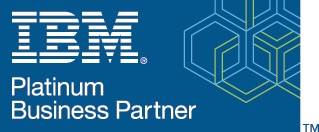July 29, 2019
A Recipe for Successful Data Analytics
To use data effectively, organizations must understand what information goes in and what insights they want to get out.

Creating a solid use case for data is like cooking a great meal. You need the correct ingredients, or data. You also have to take special needs into consideration (is anyone allergic to any ingredients? is the data sensitive, subject to regulation?). With both food and data, you want to know where it’s sourced (is the food local? is the data clean?) and understand what results you want (chewy cookies? predictive analytics?). You also need to know what you’re trying to accomplish (a meal for just one person, or an entire family? data for a single project, or ongoing analytics?).
A similar approach often works for data-driven decision-making. When my mom makes food for herself, she cooks quickly or puts something together on the go. But when she cooks for her family, she is thoughtful about the ingredients she uses and careful about everyone’s allergies, as well as personal tastes. She also thinks about the goals of the meal: Is this a big dinner, or a light snack? When I was little, she would plan out meals in advance based on our family’s work, school and activity schedules.
Data-driven decision-making is like planning weekly meals for a family. CDW solution architects review an organization’s goals and identify gaps in data literacy. Can the organization communicate effectively with data? Does it share numbers, key performance indicators and other information across the organization? Or does each department keep data to itself? Can department heads be brought together to share information?
Answers to these questions help architects know if the organization can use data democratically. Identifying data literacy and the level at which an organization works with its data is like my mom picking out the cookies she wants to make at Christmas. Does the organization have a formal data plan? Can it be shared? Thoughtful questions and a good understanding of the way the organization works create the basis for good data-driven decision-making.
How Use Cases Guide Data Decisions
Once we know which cookies we want to make, then we look for a recipe. As with cooking, having a recipe for analytics is important. But with data analytics, we don’t look for something to tell us what to do; instead, we look for a use case. We can create a use case by stating what problems we see in our environment and using existing data to help us solve them.
For example, an organization’s data center may use products from VMware, NetApp, HPE, Microsoft Azure and Cisco. To identify when something goes wrong, admins must log in to each environment and query the portal. In some cases, IT administrators may receive automatic alerts, but each environment remains separate, and visibility is limited from one environment to another.
The organization is likely to experience a number of problems from this situation, such as increased costs, greater demands on staff time and unplanned downtime. By asking a few questions, we can identify opportunities to help the organization work proactively in the data center, saving time and money:
- What information are you trying to correlate?
- Would it be useful to have all of the data in one tool?
- Would machine learning be valuable in the service desk environment, or to create help desk tickets?
This is our use case. We will use the data we have to increase the visibility of the infrastructure; this will save the company money, help admins work on more projects and increase overall efficiency at the organization.
Data Insights Fresh from the Oven
In the next step, we mix our ingredients into a bowl. Mom is careful to not use certain ingredients, because some family members are gluten-intolerant, have nut allergies or are vegetarian. If data is coming from different sources, whose reporting can be trusted?
Not only does CDW understand the sources for data, but we can also find the tools for visualization. We work with all of the major players in data analytics, including Cloudera, Qlik, Tableau, Splunk, Power BI and Elastic. We examine compliance requirements, reporting needs, manufacturer experience to support and build reports, and reliability metrics. We think about whether software is best hosted on-premises or in the cloud. Our solution architects will talk with your organization and determine which solution set — a combination of hardware, software and services — works best for you.
It’s like mixing the ingredients for our cookies, putting them on a cookie sheet and into the oven at 350 degrees for 12 minutes — we’ve enacted standards around these practices and know they will come out just right every time.
My favorite time to talk with a customer is a few weeks after they’ve purchased and implemented a data analytics solution. These tools can help them go from piles of unmaintained and unintelligible data to data that can lend insight to business processes. I love hearing the sound of relief in their voices because they’re finally sleeping at night (IT operations) or failing and iterating rapidly (application development monitoring) or automating their warehouse (machine learning automation, predictive intelligence).
Building a data-driven culture takes time, money, resources and a willingness to look at what exists today, assess it and plan for tomorrow. In the same way my mom plans for baking during the holiday season, CDW customers can plan on a data-literate future.
There are people — perhaps you are one of them — working around the clock to find the perfect framework, the perfect mix of data, the perfect tools to gain insight from your data.
Achieving this goal a lot like the moment when the cookies are finally out of the oven and I can eat one.
Want to learn more about how CDW can help you put your data to work? Visit CDW.com/DataCenter.
This blog post brought to you by:

